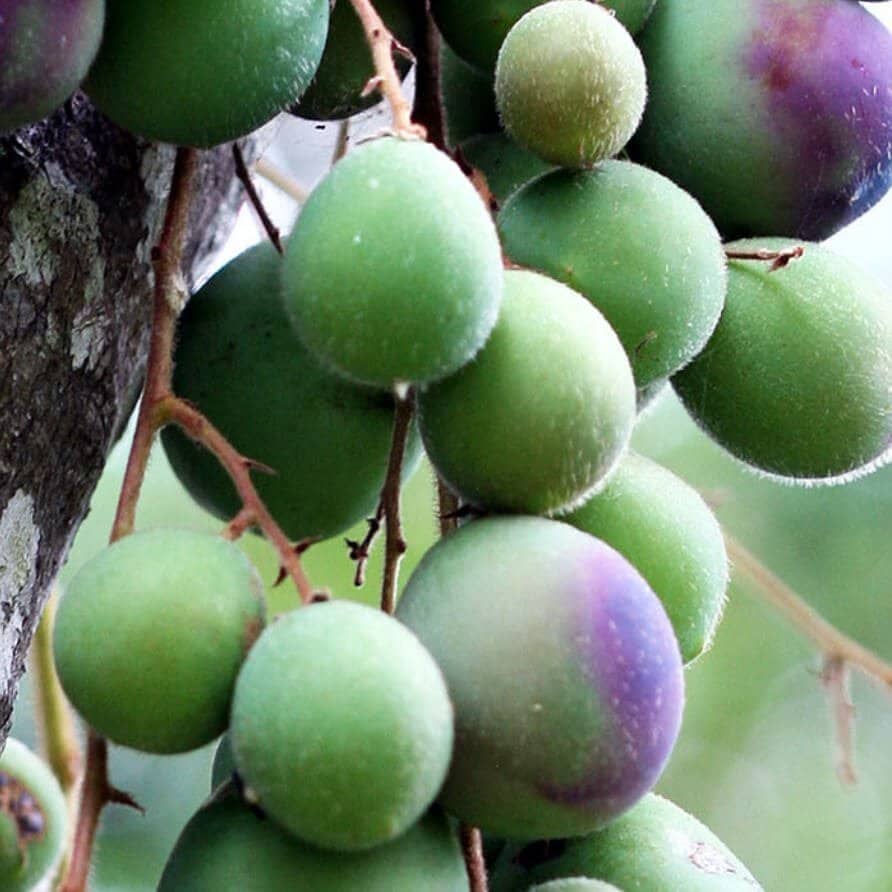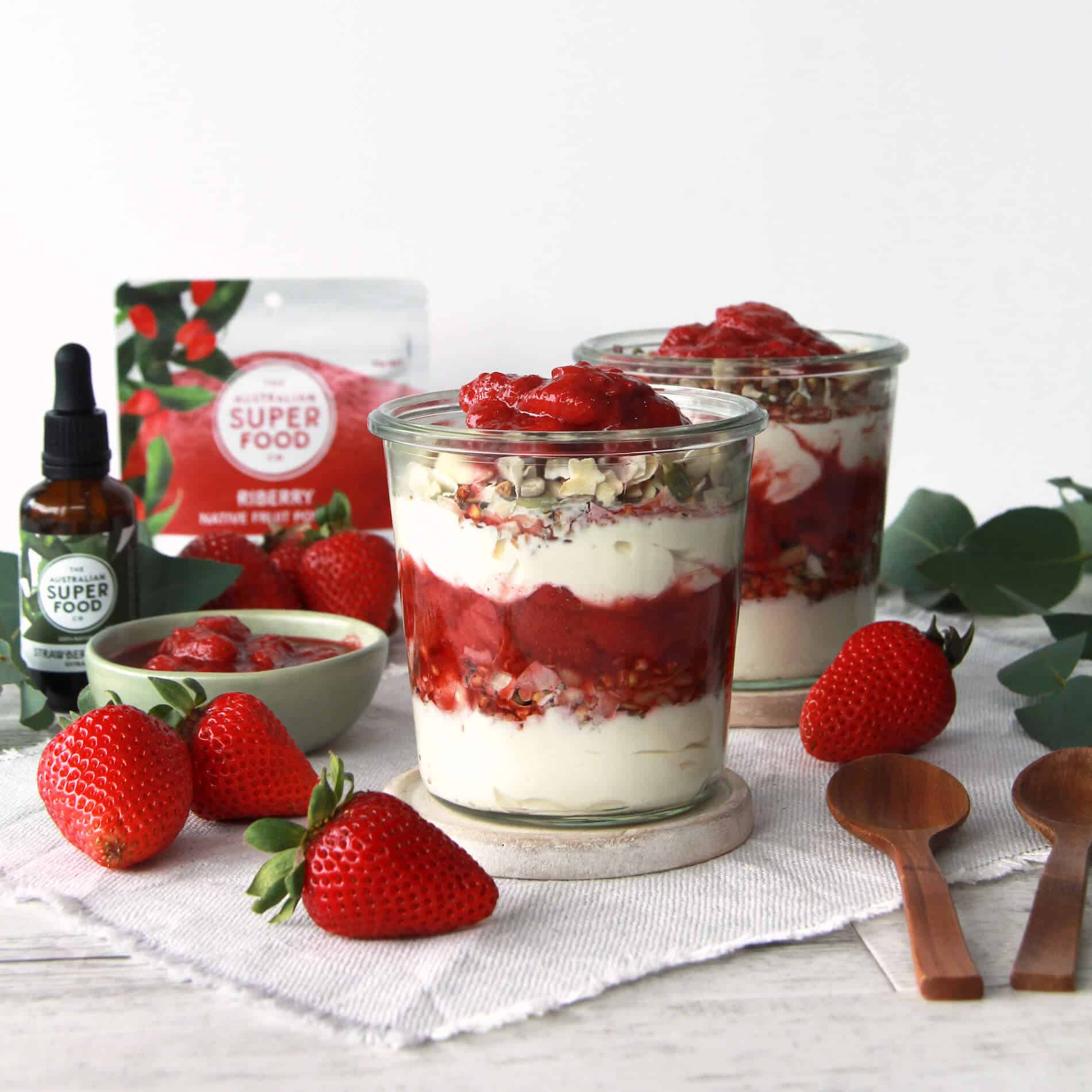Future bright for native Australian ingredients
18/12/2019 Berries, fish, leafy greens, legumes, whole grains, and acai all have the moniker of being superfoods and claim to have a range of health benefits. They are said to be nutrient-rich and have the ability to enhance peoples’ diets.
Berries, fish, leafy greens, legumes, whole grains, and acai all have the moniker of being superfoods and claim to have a range of health benefits. They are said to be nutrient-rich and have the ability to enhance peoples’ diets.
The Australian Superfood Co was set up by dietitian Hayley Blieden in 2015. Blieden came up with the idea when she was working for the North Melbourne Football Club and had a few conversations with the indigenous players about their diets when they went home after the end of the season.
“They would come back and tell me about these foods and I was blown away. As a dietitian, I consider myself a food expert, yet I had never heard of these native foods,” said Blieden. “These foods have sustained Indigenous Australians for over 60,000 years in some of the harshest, unpredictable climates. We were importing ancient ‘superfoods’ from all over the world, yet we were unaware of the bounty in our own backyard.”

Blieden started looking into the health benefits and construction of the foods and found that they had a lot of nutritional properties. And it’s wasn’t just a case of Blieden taking the word of the Indigenous consumers, or trusting her own research. The federal government also carried out research onto a lot of the products. They have analysed the anti-oxidant properties, the vitamin C content and nutritional profiles. Also, how bio available they are and how they compare to other foods on the market, said Blieden.
“The native foods are some of the most nutritionally dense food on the planet,” she said. “For instance, the Kakadu plum has the world’s highest natural vitamin C content. As well as government data, we have done our own testing that is batch specific. For instance, on our packaging we state the vitamin C conent of our Kakadu plum so we get our products tested externally to verify this.”
The Australian Superfood Co was a finalist in the Ingredients category in the 2019 Food & Beverage Industry Awards. Flora that the company works with includes the aforementioned Kakadu plum, as well as the Davidson plum, quandong, riberry, finger lime, aniseed myrtle and wattleseed to name a few.
Blieden realised from the outset that it was important to work with Indigenous Australians, due to the rich cultural significance and their intrinsic link to the land and plants. The company also works with non-Indigenous hobby farmers, as well as larger enterprises, too.
“We work collaboratively with Indigenous Australians in remote communities. The geographical location and the fragmented nature of the industry makes the native food industry particularly difficult to navigate. We see ourselves as the intermediary between these communities and growers and multi-national food and beverage manufacturers who require stringent quality control, ongoing supply and a consistent product,” she said.
“However, we have the relationships with the communities as well as farmers, which means we are able to bring the produce together, and process it in a way that will keep supply stable. The fruits are only grown in Australia. The seasonality is really important because you can only source them at certain times of the year. It’s not like you can go to America and buy them when they are out of season in Australia.”
An important facet of the business is being able to supply produce all year around. The consistency has been an issue in the past, but Blieden and her team have been tenacious in making sure all-year round supply is possible. And while there are certain times of the year products are available, they are working on trying to make sure there is an annual supply not just seasonal.
In order to manage the limited supply issue, The Australian Superfood Co preserve large quantities of fruit when they are in season. The company offers natives in a freeze-dried powder format, or liquid extract of dehydrated fruit. By preserving natives the company is able to hold large inventory stores and work with its customers to forecast requirements.
In order to increase supply, Blieden recognises that, “it is about planting more trees and changing the current agricultural landscape in Australia.” The Australian Superfood Co is currently working with Indigenous communities and current suppliers to increase their harvest as well as getting farmers of traditional crops to diversify and repurpose land to native crops.
“We know that, the limited supply will be an issue. If we do not increase supply as demand increases, then the industry will experience the challenges it has in the past and may not have the confidence to continue in this direction.”
New Zealand’s kiwifruit started out as the Chinese Gooseberry before it was adopted by Kiwis in the 1940s and 50s. Supply issues aside, is Blieden worried that some of these plants genus’s might make their way overseas and end up being produced outside of Australia, similar to the kiwifruit?
“It is a concern and it would be so sad if it ever happened. It is a big worry that somebody might take saplings out of the country and try and grow them overseas,” she said. “That is exactly what happened to the macadamia nut. If you ask people where the macadamia nut originated from they will tell you Hawaii. There are laws being put in place to stop this. When we purchase our Kakadu plums from certain communities, we sign a document stating we won’t sell the seeds.
“We know the way the world works and what drives business. We just hope we are able to secure our seeds and make sure that doesn’t happen, but it could be very difficult.”
Already these ingredients are proving popular among chefs around Australia as well as some of the big food manufacturers. And while some of the products may be costly, the way they are processed means consumers can get a big bang for their buck in terms of value for money.
“Quite a few well known chefs are using the products like Matt Stone, Ben Shewry from Attica – almost all high-end restaurants in Australia are incorporating Australian natives, which is exciting,” said Blieden. Large multi-nationals are also adopting native ingredients with Peters Ice Cream launching a range of native-infused ice creams as part of the Connoisseur range.
“These ingredients offer unique nutritional properties and flavour profiles. Incorporating them makes them more expensive but in the freeze dried format they are all highly concentrated so you only need a small amount. It is almost a 10-1 ratio. You use 10 kilos of Davidson plums to get 1kg of powder. You only need a teeny amount to really get an intense flavour and colour.”
Overall, Blieden sees a rosy future for Australia’s natural ingredients place in the food chain. Her only issue is whether demand will eventually outrun supply.
“The demand is high at the moment,” she said. “We are forecasting several multiples of inventory for the next year. Supply meeting the current demand isn’t an issue either, but if demand increases at the current rate, then it will become one.
“It will take 12 months to five years to harvest new crops – depending on the crop – so we need to get onto it now. For the gums and the myrtles it’ll be 12 months, but for some of the fruits it will a number of years before we can start cultivating them.”
This article first appeared in Food&Beverage and can be found here.
News, Media










